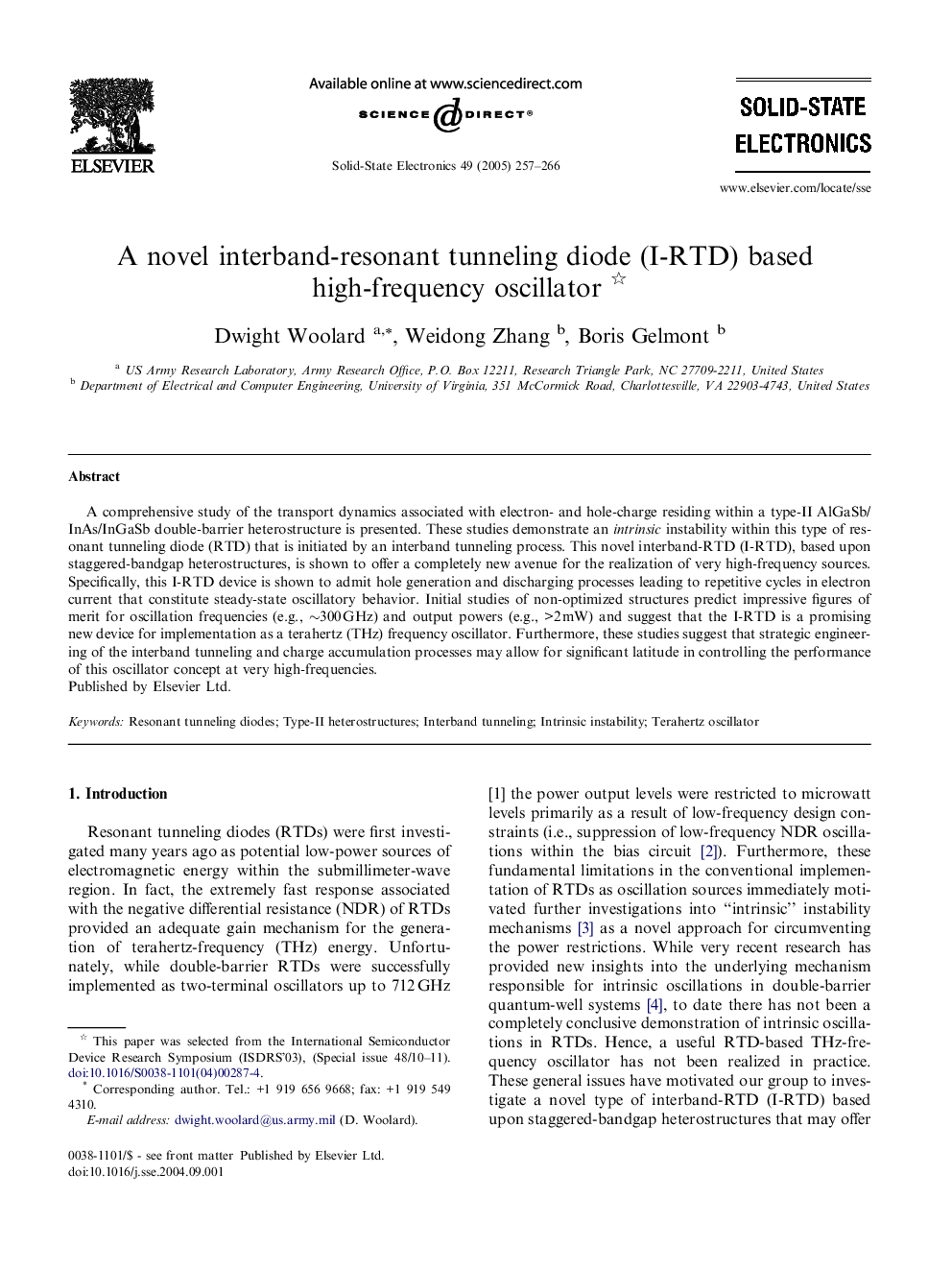| Article ID | Journal | Published Year | Pages | File Type |
|---|---|---|---|---|
| 10411207 | Solid-State Electronics | 2005 | 10 Pages |
Abstract
A comprehensive study of the transport dynamics associated with electron- and hole-charge residing within a type-II AlGaSb/InAs/InGaSb double-barrier heterostructure is presented. These studies demonstrate an intrinsic instability within this type of resonant tunneling diode (RTD) that is initiated by an interband tunneling process. This novel interband-RTD (I-RTD), based upon staggered-bandgap heterostructures, is shown to offer a completely new avenue for the realization of very high-frequency sources. Specifically, this I-RTD device is shown to admit hole generation and discharging processes leading to repetitive cycles in electron current that constitute steady-state oscillatory behavior. Initial studies of non-optimized structures predict impressive figures of merit for oscillation frequencies (e.g., â¼300Â GHz) and output powers (e.g., >2Â mW) and suggest that the I-RTD is a promising new device for implementation as a terahertz (THz) frequency oscillator. Furthermore, these studies suggest that strategic engineering of the interband tunneling and charge accumulation processes may allow for significant latitude in controlling the performance of this oscillator concept at very high-frequencies.
Related Topics
Physical Sciences and Engineering
Engineering
Electrical and Electronic Engineering
Authors
Dwight Woolard, Weidong Zhang, Boris Gelmont,
